MAKING GREAT WEB VIDEO
We know why you picked this book up. You want (or have been asked) to make great web video. You want your video to connect with an audience and be seen. You want to entertain or inform. You want to raise awareness for a cause or recruit customers to your business. Your goals are diverse and complex, but they are attainable.
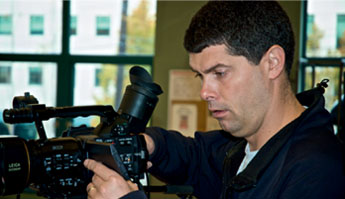
Our recipe for quality video includes four stages and an optional goal:
- Plan. A lack of planning leads to an abundance of failure. Whether you're spending real dollars or just time and effort, there is no excuse to skip planning. While “dumb luck” exists, successful planning is more likely to bring results.
- Produce. We'll tackle how to achieve high-quality results using both professional and consumer equipment. We're sure to reference tools at various price points (including free and do-it-yourself options). But we've never met a successful carpenter who hasn't reinvested in some good tools along the way.
- Distribute. There are many ways to publish video to the web. We'll explore how to successfully prepare your files for the net. We'll also address important options like podcasting, hyper-syndication, video sharing, and mobile video.
- Promote. If you don't make some noise, you won't be heard. We'll discuss formalized and guerilla promotion strategies. We've also got some great advice from some top web video producers who share their secrets.
- Monetize. The monetization strategies we offer are practical ways to earn money from your program. We'll examine different models from sponsorship to selling products and services. This chapter is optional, but we'll share practical advice to turn your efforts into dollars.
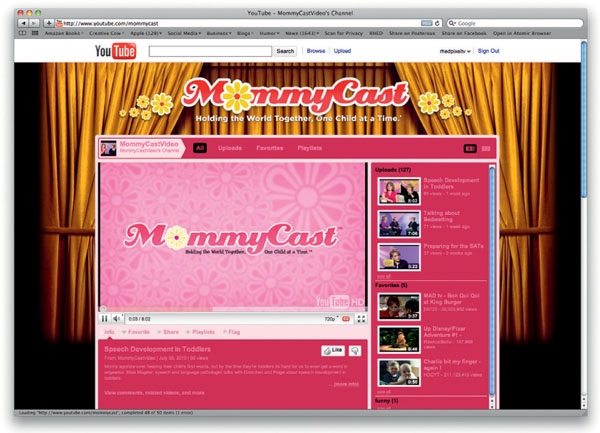
One of the programs we'll explore in this book is MommyCast (www.MommyCast.com). The show reaches millions of viewers and is distributed as a podcast, on YouTube, on Facebook, and even TiVo.
This book is written for those who need to create professional-level web video. We realize that the word professional has different meanings to different people, so let us be clear. You have a financial stake in the outcome. This may be an investment in your time, your company's brand, actual dollars from a client, or a complex web of needs and expectations. You don't just want results—you need them.
Whether you are a video pro, a multimedia developer, or a communications professional, this guide is written to help you. We wanted to create a book that addressed the diverse requirements of web video. We also wanted to straighten out several misperceptions and bad practices that we have encountered. If you like your books to be based on real-world experience, this is the book for you.
A Dose of Reality

We have spent four years developing the content of this book. We've also been publishing video to the web since 1996. These ideas are time tested and put in practice every day. Rather than rush this book out the door, we have refined our workflows and opinions. We live video and new media production every workday; the advice you'll find in this book is how we get the job done.
The Pew Internet & American Life Project
![]()
Our principal source is of information is the Pew Internet Project, which is an initiative of the Pew Research Center, a nonprofit, nonpartisan “fact tank.” This group provides information on the issues, attitudes, and trends shaping America and the world. The project studies the social impact of the Internet and shares its findings at www.pewinternet.org.
The Opportunity of Web Video
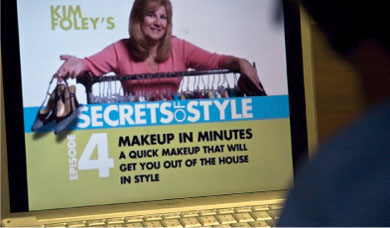
There's a lot going on with web video in recent years. Technology has continued to improve at a rapid pace. This has enabled both the growth of new audiences and new opportunities as well as the ability to deliver a better-looking product to these audiences.
Many of the industry's largest television networks and video producers have also embraced web video as an opportunity to create additional revenue streams for their content. This new market is rapidly expanding, and it's one that most believe encapsulates the best opportunity to bring video to consumers.
In this section, we're going to explore some recent research about the state of web video and broadband Internet. Where possible, we're limiting our sources to only the most credible of government and nonprofit research groups to present a fair and balanced overview of the state of web video.
The Growth of Broadband Internet
While web video and podcasting do not require broadband access, they certainly thrive with high-speed connections. The Pew Research Center found that nine in ten consumers of online video have broadband at home. In fact, 76% of those with broadband access watch video at home. Those that want video want it fast. But just how many people have broadband Internet?
The exact numbers vary greatly over the world. Let's first take a look at the United States, and then we'll broaden our view globally. The U.S. Federal Communications Commission reported in 2010 that 78% of adults in the United States are Internet users and 65% of adults have home broadband access. The Pew Research Center had similar findings for 2010 and estimated that 63% of American adults now have high-speed connections into their homes.
Here's a look at the state of global connections:
Top 10 Countries by Number of Internet Users
Rank |
Country |
Internet Users |
Population |
1 |
China |
420,000,000 |
31.80% |
2 |
United States |
234,372,000 |
76.30% |
3 |
Japan |
95,979,000 |
75.50% |
4 |
India |
81,000,000 |
7.00% |
5 |
Brazil |
72,027,700 |
36.20% |
6 |
Germany |
61,973,100 |
75.30% |
7 |
United Kingdom |
46,683,900 |
76.40% |
8 |
Russia |
45,250,000 |
32.30% |
9 |
France |
43,100,134 |
69.30% |
10 |
South Korea |
37,475,800 |
77.30% |
From www.internetworldstats.com/stats.htm.
Top 10 Countries by Percentage of Internet Users
Rank |
Country |
Internet Users |
Population |
1 |
Iceland |
285,700 |
93.20% |
2 |
Norway |
4,235,800 |
90.90% |
3 |
Greenland |
52,000 |
90.30% |
4 |
Sweden |
8,085,500 |
89.20% |
5 |
Netherlands |
14,304,600 |
85.60% |
6 |
Denmark |
4,629,600 |
84.20% |
7 |
Finland |
4,382,700 |
83.50% |
8 |
New Zealand |
3,500,000 |
83.10% |
9 |
Australia |
17,033,826 |
80.10% |
10 |
Luxembourg |
387,000 |
78.70% |
From www.internetworldstats.com/stats.htm.
World internet Users and Population Stats
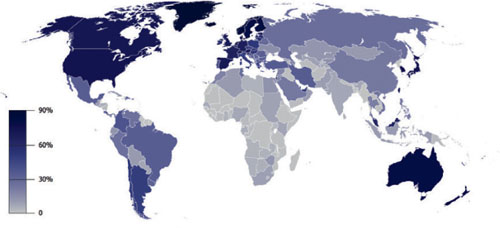
This is a file from the Wikimedia Commons.
The Growth of Internet Video
The growth of broadband video has had an impact on the viewing habits of its users. The Pew Internet & American Life Project found that in the year 2010, 69% of online adults have used the Internet to watch or download video. This total represents 52% of all adults in the United States.
Improvements in wireless connection are only boosting these numbers. Pew finds that “Fully 71% of those with wireless connectivity watch videos on video sharing sites compared with just 38% of those who do not access the Internet wirelessly.”
This is also spilling into mobile phones and portable media players with both Internet connections and mobile publishing capabilities. Approximately 14% of cell phone users have watched video on their phone. Most interesting is the fact that cell phone users are more likely to record video on their cell phones than watch it; 19% of cell phone users say they've recorded video with their phone.
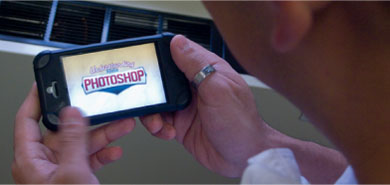
Devices like the Apple iPhone are helping broaden the reach of web video.
The Fast Pace of Broadband Adoption

Broadband Internet access has hit the 50% adoption milestone faster than most other consumer technologies. It has taken about 10 years for broadband to reach 50% of adults in their homes. For example, it took 18 years for color TV to reach 50% of Americans, 18 years for the personal computer, 15 years for the cell phone, 14 years for the videocassette recorder, and 10.5 years for the compact disc player.
In an earlier (2007) report, the Pew Research Center found that “half of online video viewers (57%) share links to the video they find with others, and three in four (75%) say they receive links to watch video that others have sent to them.” These trends bode well for web video producers. If you produce high-quality video that is on target, your audience will share it with others. This type of growth is often referred to as viral, and it works well online. Success can come much quicker than through other media outlets, and at a lower cost because traditional advertising often has little to do with viral growth.
The State of Online Video
![]()
For full details on these statistics, be sure to read the Pew Research Center's report – The State of Online Video. It's available at www.pewinternet.org/Reports/2010/State-of-Online-Video for free.
It's a Competitive World

One in seven adult Internet users (14%) have uploaded a video to the Internet. This means you have a lot more competition that you used to. There's no room for sloppy planning or poor production—you'll just get swept under the wave of “user-generated excrement.”
The Involvement of Big Business
Web video is a part of traditional media's plan to stay relevant. Television networks in particular realize they need to move their video content to the web, enabling both space shifting and time shifting. The challenge here is that many of these traditional content generators hold onto their old ways of thinking. While these studios would benefit from podcasting and online video, many want greater control over their digital files through the use of digital rights management (DRM) technology.
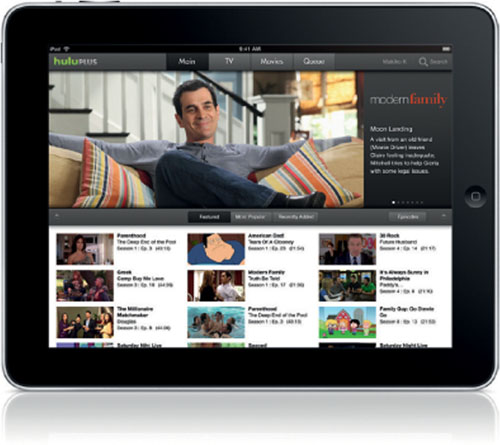
Image courtesy Hulu
Motorola found that 45% of European broadband users watch at least some television online. The percentage was as high as 59% in Spain and France (it currently stands at 32% in the United States). The Pew Research group has found that 7% of all Internet users in 2010 have paid to watch or download a video. That number was only 4% in 2007, so that's steady growth where dollars are concerned.
The biggest change though has been the use of video-sharing sites like YouTube, Facebook, and Vimeo. These sites gather video together and make it easy to search content and share with others. The percentage of adult Internet users who watch video on these sites has grown from 33% in December 2006 to 61% in 2010.
All sorts of business models are being tested, from subscription content, to sponsorship, to selling related content. What has been a constant struggle is the goal to embrace nonintrusive advertising or monetization strategies that are highly targeted to the viewer. What will continue to be a struggle will be meeting the demands of consumers while generating revenue for the content creators.
Web Video development
Now that you understand the size of the audience, as well as some of their habits, you can start to develop (or refine) your web video ideas. It all starts with a concept, the essential nugget of an idea that is your approach. You then need to determine the best genre or style of production that will connect with your audience. Once you've refined the idea, you'll need to examine your technical approach. We find that a guiding principle is how can we do as much as possible with as little as possible.
Once you know what you want to do and how you're going to do it, you'll need to communicate with others. Writing a treatment allows you to share your ideas with others. The same goes for a video or series description, which will become a critical creative and marketing tool.
Many feel that the apple iPad is changing the landscape for mobile and personal video consumption. Services like Hulu and Netflix are serving up premium subscription content to viewers.

When it comes time to kick off a web video project, you'll want to gather all the key players into a creative development session. This may be a face-to-face meeting or an online forum. Everyone should come together to brainstorm the most effective approach for the project. Just make sure you set an agenda and clearly invite folks.
Developing a Concept
A key step in your show's preproduction is creative development. The show's concept needs to be developed, beaten up, chewed up, and then spit out. Chances are your original ideas and assumptions will be a lot stronger after you put them through a creative wringer. Here are a few things we've learned in developing new shows:
Directories like Apple iTunes let you analyze your competition and see how they stack up against each other with ranking charts.

- Don't try to reinvent what already exists. You need to closely examine what's already in the web video universe. Don't waste your time developing a concept that is identical to a hit show. After all, it's a rare day when the clone surpasses the original. With that said, don't give up on your idea, refine it.
- Figure out what you can do differently. If your competition offers long shows, offer shorter shows to appeal to those on the go. If your competition comes out monthly, come out weekly. If the competition takes a serious approach, look at humor. In other words, don't change the subject, but do change the delivery. In broadcasting, it's called counter-programming and the concept holds true here as well.
- Decide whom you want to attract. Web video and podcasting are niche media. Going after a smaller, targeted group is what it's all about. You need to think long and hard about whom you want to reach. By refining your target audience, you stand a much better chance of appealing to them and capturing them as viewers and subscribers. That's not to say you want black-haired, blue-eyed, left-handed, 27-year-old chemical engineers. But a video that goes after engineers of all types would probably fail just as badly. What's important here is that you identify a specific group with specific interests, then develop content that fits their needs.
- Make sure your visuals matter. Could your web video be delivered as an audio-only podcast? If so, don't create a video just to make a video. Producing web video is more expensive than audio podcasting. Make sure you're leveraging the strengths of the medium to justify the cost (and download time).
The Five Ws
Although it may seem a little cliché, another way to refine your show's concept is to ask the standard who, what, where, when, and why questions:
- Who? Who is going to watch the show? Who is going to host the show?
- What? What topics will the show cover? What genre or format will it use?
- Where? Where will the show be recorded? A studio? On location?
- When? When will the show come out? Daily? Weekly? Monthly?
- Why? Why would a viewer subscribe to the show? Why would that viewer come back for another episode?
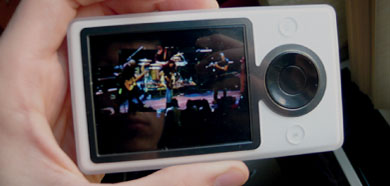
Developing a Genre
When you go into a major bookstore, you'll find that books are typically sorted by genre. All books of a particular category (such as mystery, history, or technology) are grouped together for sale. This practice makes it easier for consumers to find what they want. The same holds true for online video.
Does Age Matter?
![]()
For a great breakdown of viewing habits by age demographics, see http://tinyurl.com/pewagereport. This will help you target a specific group more efficiently.
The Pew Research Center found substantial growth from 2007 to 2010 in all online video. These three genres saw the biggest growth:
- Comedy or humorous videos, which have risen in viewership from 31% to 50% of adult Internet users.
- Educational videos, which have risen in viewership from 22% to 38% of adult Internet users.
- Political videos, which have risen in viewership from 15% to 30% of adult Internet users.
Here's the breakdown by genre:
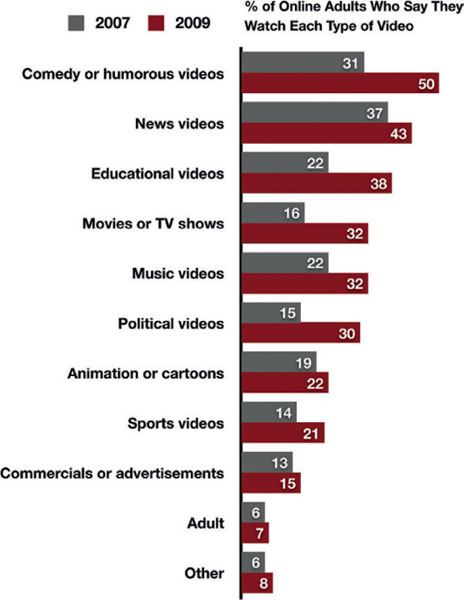
Determining a Technical Approach
Once you've refined your topic, genre, and target, you need to make some initial decisions about how you're going to produce your show. Different styles of production can greatly impact the cost of your project. Be sure you identify how the web video will be produced. Using a studio can drive costs down as it adds an element of control to the production process. On the other hand, a screencast style of production for technical training often just features the voice of the talent and a capture of what they were doing on their computer.
Be sure to pick the best format to capture the visuals in your show that your budget can afford. Think about the big picture here, the major decisions that will shape how you will execute your show.
The same studio space, but two very different shows. MommyCast records new episodes every few weeks, whereas Understanding Adobe Photoshop records a year's worth of episodes in a few days time. Both shows are recorded at 720p at 24 frames per second.

Which HD Is the Right HD?

We typically acquire shows in 720p HD (a frame size of 1280 × 720) at 24 frames per second (the same as film). We find this to be a great balance of image quality and cost. The progressive frames can also be cleanly scaled to smaller sizes for portable players.
- Production frequency. How often are you going to record new episodes? We personally favor shooting multiple videos at a time. Many of the web video series we work on only record a few times a year (some even go for a solid week and record a year's worth in a single period). This type of production is more cost efficient, but it makes it harder to be timely and react to outside events, viewer feedback, and sponsor's requests. You'll need to balance your production schedule with the needs of the content and your budget.
- Acquisition size. There's been a rush for high-definition (HD) video for the web. This is because many consumers are viewing web video on televisions and large computer monitors. Of course, the practice of mobile video on smart phones and portable media players is booming too.
- Delivery methods. You need to consider your primary and secondary delivery methods. A show that relies on downloads (such as a podcast or digital purchase) will be expected to have a higher image quality and data rate. On the other hand, you may be streaming the video off free video sharing sites, which will compress the picture heavily. The delivery method will impact the shooting style, sets, graphics, and even pace of editing that you'll choose.
- Audience capabilities. You need to make some assumptions about the members of your audience. Will they view your show on portable media players, laptops, or set-top boxes? Do they want faster download or streaming times, or are they willing to wait for a high-definition episode to download? You need to give careful thought to how your show will be consumed if you want to avoid alienating prospective viewers.
The LCD Test

We believe in the least common denominator test. That is to say that the video must look good at a connection speed and on a playback device that we consider to be the low-end of our target. Currently, this threshold is video streaming over the YouTube player to an iPhone (using the slower Edge connection). We'll post test shots and graphics throughout the development process to check how the video looks and sounds. If it looks good there, it'll look even better everywhere else.
Writing a Treatment
The treatment is considered a standard part of the development cycle for most film and television productions. The truth is that all kinds of video producers can benefit from creating a treatment. The goal is to write a single document that defines the video's concept and summarizes the creating approach to be taken. The best part of making a treatment is that is formalizes the creative process for the producer. The major benefit here is that the document can then be shared with others as you work with other creative professionals, get approval from a client, or even seek funding or approval.
We recommend the following approach to developing a treatment:
1. Define the goals and set parameters. What core message are you trying to convey? Who do you want to watch the video? What desired outcome would you like to create (volunteering, purchases, political change, or a good laugh)? What's your budget, and how long will the video run?
2. Identify the concept. You'll want to be able to quickly summarize the theme and objective for the video. Describe to others the core message and frame its delivery method.
3. Choose an approach. Now's the time to lay out the specifics. This is generally a narrative summary of the journey the audience is going to take. In a way, it might resemble a book report you wrote in school—a clear summary that reveals all of the important details that will be presented to the viewer. Describe specifics that will elicit response by the audience including music choice, shooting style, and editing approach. Describe the emotions you will solicit along the journey and how the audience will feel at the journey's end.
Multiple Treatments

Experienced producers often force themselves to write multiple treatments for the same project. This creative refinement process often forces the best ideas to the top. Plus, it gives you extra options when a client or boss doesn't like your first idea.
Essential Questions to Ask at the Beginning
of a Project
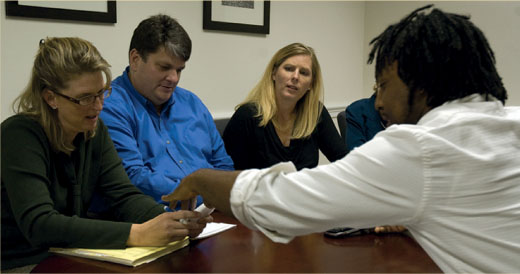
Through the years, we've learned a lot of lessons the hard way. Although every project is unique, it often seems that the problems remain the same. Here are a few questions we always encourage asking at the start of any video project:
- Who is our customer? Projects often have many parties involved. Be sure that you know whom you're responsible to keep happy.
- What is the purpose? You need to know what the video is trying to accomplish.
- How will we measure success? Determine which factors will be used to judge the success of the project.
- What do we want to say? Identify the goal of the piece and the message that the audience should walk away with.
- What resources do we have? Decide who will be assigned to the project. Establish if any assets or resources are available to the project that should be utilized. Make sure no assumptions are being made about what you have to work with.
- What is the budget? Never discuss approach without having an idea of your financial constraints. Creative types often get swept up into big ideas without knowing what the project can support.
- What are the deadlines? Equally as important as budget is schedule. You need to understand any major milestones so you can schedule work and adjust your approach to match the available time.
- Are there any customer requirements? Never make assumptions. It's always a good idea to ask the clients if they have any specific needs or requirements for the end product. You'll often be surprised how important details can go unspoken until the very end of the project.
Writing a Video or Show Description
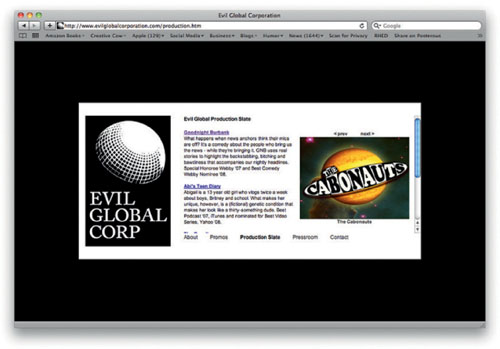
Hayden Black runs Evil Global Corporation (www.evilglobalcorporation.com), which produces some of the most original web series. The corporate site offers detailed and humorous descriptions of shows in development.
Let's take another page from the rulebook of television and film. Create a compelling description for your video or show. If you were a television show, this would be the write-up for the entertainment press. If it were a movie, you've just written the label for the back of the DVD.
The goal here is to capture the spirit of the web series or individual video. You'll need to convey to others in a short time frame what the project is all about. Many call this an “elevator speech,” as it should be able to be presented (and understood) in less than 60 seconds. When done correctly, this document can also be used for early promotional efforts during the development of the video.
Shot Ratio Matters

Between DV tape and FireWire hard drives, the concept of shot ratio seems to have gotten lost. With web video, your shot ratio matters. Shot ratio is how much footage is acquired versus what's used in the finished cut. For example, if you shot 60 minutes of material and used 20 minutes, that would be a 3:1 shot ratio. If your shot ratio creeps above 4:1, you need to closely examine your shooting and production style. The only exception is multicamera-style productions. In this case, just count how much footage was used from the most utilized camera to produce the finished piece.
Budgeting Guidelines
If you're looking for a pot of gold, you're chasing the wrong leprechaun. Web video budgets are not the same as feature films or commercial spots. With web video and podcasting, the key to making money is efficiency. Figuring out how to do more with less is the guiding principle. In this section, we explore practices that affect the bottom line.

Don't Make Assumptions
With web video, you need your shoots to run smoothly and efficiently. You will not be able to get the most out of your shoots if you've based your preproduction on bad information. You really want to know the goal of the shoot, the objectives of the shoot, how many episodes you are trying to accomplish, and that the client, the talent, and the director have the same expectations. We have found that we can record more than 25 episodes in a day if we plan properly and the talent is prepared. The bottom line here is efficiency. Be efficient, have a plan, and execute the plan with the minimum number of resources, and you'll do all right.
Estimating Time
There is a formula that many project managers use that comes from working with the federal government. It's a conservative formula that helps estimate the time it will take for a task in a project:
((1 * O) + (4 * M) + (1* P)) ÷ 6
That's one times an optimistic work estimate, plus four times a most likely estimate, plus one times a pessimistic estimate, then divided by 6.
Here's how it works. Go to a member of your project team who's going to work on the task (such as the editor) and say, “So, how long would this take?” Note, this is not the most likely number. This is the optimistic number, because if you ask any creative person how long something is going to take, it's an exaggerated number based on the person's ego and personal self-worth. This time estimate is always off (this is not a slam on creative types, it is just true).
Then you ask, “Well, if it were anybody else doing the work, how long would it take?” This is the most likely number.
Next you ask, “If things went wrong that we really didn't count on—computer problems, bad communication—what's a bad-case scenario?”
Then you do the math: one times the optimistic work estimate, plus four times the most likely estimate, plus one times the pessimistic, divided by 6. This gives you a more accurate time estimate for the work at hand. You can increase the accuracy by surveying other subject-matter experts (such as all the editors in your office).
This is how the government does averaging, but you have to do it at the major task level. By getting the subject-matter experts involved, you are more likely to get accurate numbers about the work to be performed.
Keep It Short
Here's a simple idea: Keep your web videos short. It is better to have ten 4-minute episodes than one 40-minute episode. We try to keep our web videos to less than 10 minutes (in fact, they are less than 5 minutes long in almost all cases).
Web videos tend to be consumed during things like work breaks, downtime, and airplane flights. Others will use them during commutes on the morning train or the subway. Think of web video and podcasts as portable, on-demand learning or entertainment.

Remember that your audience is often watching web video on portable media players with small screens. Be sure to keep the total run time low to avoid viewer fatigue.
In the training videos we produce, we try to limit topics to one per episode. And if a single topic takes more than 10 minutes to explain, then we'll split the video into two or three parts. This way, the viewer can download part 1 and start watching it while waiting for the rest to download or be released. There's nothing wrong with multiple parts. That's the whole concept of serializing a web video into an actual series that builds up a subscription and viewership base.
Giving Credit

We try to put our production company end slate whenever possible on web videos we produce (you see these graphics at the end of TV shows and the start of movies). If we can't get an end slate, we insist on getting a name credit in the show's credits. This should be a prominent credit like “Production services by.” Whenever possible, get your name, your production company name, or your organization's name in the end credits.
Keep It Simple
Most web videos are unlikely to have huge budgets. It's a good idea to design your video using the principles of Electronic News Gathering (also known as Electronic Field Production, or EFP). The guiding principles here are speed and agility in acquiring the footage as well as swiftness in editing. The primary concern is getting the material to the audience in a timely fashion. News-style production is known for its efficiency, yet it retains production values that are perfectly acceptable to most television viewers. You should strongly consider adopting this approach when planning your shoots.
Selecting and Prepping Talent
The good news is that web video is fairly democratic in nature. Web video audiences seem to prefer “regular” people as opposed to Barbie and Ken dolls, which often plague the traditional broadcasts. If you browse the top podcasts in each category on iTunes or look at well-performing series on YouTube, you'll find a large assortment of “nonprofessional” talent and hosts.
Don't Share Line-Item Budgets

Although using a line-item budget is essential to creating an accurate budget, we try hard not to share these outside the company. We do not give clients line-item budgets because it often leads to unnecessary quibbling. Instead, we “roll” the budgets up. Identifying the major work packages to be performed and the total cost per category (such as preproduction, production, and postproduction). For example, we say, “The production budget is $2,500 and it includes a camera operator with camera, audio engineer with three microphones, and director for an 8-hour day.”
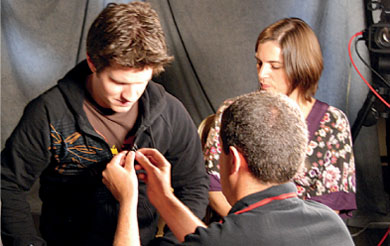
Selecting good talent for a web video is perhaps the most important thing you can do. It involves finding someone who can connect with the target audience and deliver a message while keeping the audience entertained or interested. When it comes time to find your host or actors, you may have to look in several places.
Casting Talent
If you can afford it, then you can hire professional actors for your production. The benefit here is that people are paid to be professional. This means you stand a better chance that your actors will show up on time and know their lines (Note we said better chance—not a guarantee.).
You can use a casting agency in your area to help recruit talent. Agencies often keep several headshots of actors on hand. They can also set up auditions and rehearsals for you and take on some of the management tasks associated with recruiting and selecting talent. Of course, these services do typically cost money.
If you need a do-it-yourself approach, we recommend targeting places with high quantities of actors. This can include school and community theater programs as well as local professional groups.
The fees you pay will vary greatly. Some actors will belong to the Screen Actors Guild union, which sets minimum standards for payment. Other actors are not affiliated with a union and will set their price based on the work to be performed and how broadly the video is distributed.
Background Players Roulette

In many web videos, you'll have background characters or extras. They might be shoppers in a store, an audience for a presentation, or volunteers for your cause. Rarely will you be able to afford or recruit enough. Be sure the extras you do bring have a few clothing outfits. By swapping clothes and changing their appearance, you can often mix and match talent to create some variety. For example, when an extra's back is to the camera, have him or her wear one set of clothes; when it is time to play a more prominent role, have the extra switch clothing.
Recruiting Talent
Most web video producers will find their talent through recruitment. They may call in favors or make an announcement through the sponsoring organization for people to appear in supporting roles. Others will also post ads to locations such as Craigslist to raise awareness. Chances are, if you're going this route you have little or no pay to offer.
Here are a few guidelines to ensure best results:
- Be clear on the compensation. Don't be vague about what you will or won't pay. No one likes their time wasted with vague promises of compensation. If all you're offering is a meal and experience, say so.
- Offer something of value in return. If you don't have cash to offer, give something back to your talent. It might be services traded (your time for theirs). If you're working with up-and-coming actors, be sure to offer copies of the final production. You may also be able to take a few additional photos or headshots while on set.
- Be clear on expectations and time commitment. Make sure people know what they are committing to. Be clear on just how long you expect to need them. Do your best to avoid slipping of schedule, and remember that time really is money.
Working with Clients
One of our core competencies is producing videos for others. We've been trusted with top corporate brands and major nonprofit associations. In these cases, we often find ourselves working with the leadership of these corporations. There's no better way to lose a client than to make an executive vice president look bad on camera.
With that in mind, here are four simple steps you can take to improve your chances for success:
- Schedule a conference call. Try to have a short call before the shoot. Review the objectives and schedule. Be seen as being proactive and concerned. Encourage the client to bring a few changes of clothes to the shoot.
- Assure your clients that you are there to make them look good. We try to take clients aside before shooting and discuss the role of the director—how we might ask them a repeated question or to do another take. We're not doing this to be critical but to ensure they come off at their best. This is also a good time to address makeup and wardrobe concerns.
- Establish open communication. Make sure that the clients know they are part of the creative process and that they should raise their concerns and express any needs or desires about the production.
- Remind the crew to be professional. Clients are not your friends. They don't want to hear your jokes or the witty rapport between crewmembers. Be professional, courteous, and focused. You'll succeed if you remember to act more like a hotel's concierge and less like its bartender.
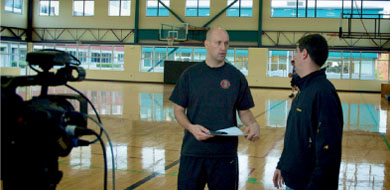
A Little Makeup?
![]()
We always try to get our talent (especially if they're clients) to allow for a makeup artist. These professionals are charged with making your subjects look their best. If that's too much to spend, we still offer makeup and apply it to help smooth out wrinkles and blemishes for the HD cameras. Of course, some refuse that too. Digital Anarchy makes a very cool plug-in for Final Cut Pro and After Effects called Beauty Box, which is essentially virtual makeup. It can be applied after the fact to smooth out the skin (without making the eyes or mouth look weird).
Preparing Talent
Oftentimes, web video talent has little or no on-camera experience, which is okay if you properly prepare them. Make sure your talent is well rehearsed. Utilize the setup time before the shoot to do an onset rehearsal. A lot of producers make the mistake of having the talent come only a few minutes before the call time. While the crew is setting up, we often ask the talent to show up; then we just go have breakfast, we talk through things, and let them get all their fears and anxieties out in the open.
Before the shoot, be sure to share the treatment, script, or other relevant materials. Make sure that those you cast are part of the creative process. Share your treatment or script so all can prepare. This will ensure a smoother shoot and give all involved a sense of belonging.
On-Camera Considerations

We share the following list with all clients and on-camera interview subjects to help them prepare. You may need to adapt this list to your specific needs or style of production.
- Please bring at least one alternate set of clothing.
- Herringbone, stripes, or small patterns do not look good on camera.
- Keep your jewelry simple.
- Please do not wear bright white. Cream, eggshell, or a light gray is preferred.
- We will offer you stage makeup when you arrive. This is to help you look and feel your best. You can choose not to wear it, but all the top network folks do (even the guys).
- Please avoid enumeration or the phrase “Like I said before.” It is likely that we may only use an excerpt of your quote (and counting just confuses the audience).
- Don't be afraid to stop and start over. If you feel uncomfortable or would like a moment to gather your thoughts, please take your time.
- Relax. We're here to help you. We want you to look and sound your best.
PRO file: Evil Global Corp. |
One of the most successful and creative forces in web video is Hayden Black and his Evil Global Corp (www.evilglobalcorporation.com). The Los Angeles-based independent production company creates original new media as well as promotions for television and film.

Since 2006, Black and his team have launched shows with strong followings. Their first show was Goodnight Burbank and two spinoff programs—Goodnight Burbank: Breaking News and Goodnight Burbank: Hollywood Report. The show describes itself as “a little ’The Office’, a little ’The Daily Show’ and a lot of originality—that's Goodnight Burbank, a fictional 11 O'Clock newscast delivered straight from Hollywood's backyard.”
Black shares his creative process. He says it takes a lot of thought and development to come up with crazy ideas that actually work.
“I do a lot of walking and spend a couple hours a day just thinking. If I laugh, I know I'm on to a good thing,” said Black. “The trick is not to rush it. Let it stew and marinate. If it's a good idea it will get better and better. If it isn't, you move on to the next one.”
Goodnight Burbank has become quite the success with millions of views both online and on mobile platforms. USA Today stated that it is “Funny…Well done. It's a lot better than 99% of the stuff on TV.” In fact, the show is even in talks for re-airing its content on television.
It's this quality that lets Black work with top actors in the industry. His latest series, The Cabonauts, is described as “a sci-fi musical comedy starring all your sci-fi favorites in brand new roles—and singing and dancing as well. Think Hitchhiker's Guide meets Glee, and you're halfway there.” The show features actors who've appeared in Star Trek, Dollhouse, Buffy the Vampire Slayer, and Buck Rogers in the 25th Century.
Black emphasized the need to approach web video with the same drive for quality as other outlets. When asked for the ingredients for a successful web video, he responded:

“First, great writing. This includes having an original idea and a unique voice with which to write with. Second is great actors, and third a great crew. Pretty much the same ingredients for a successful TV series or movie. Nothing's really changed!”
Black emphasized the need to really focus on original ideas if you want to succeed as a web video producer.

“Don't go with a parody. Find something new to say. And have fun,” said Black. “Initially, it's going to be the most work you'll ever do for the least financial reward—but to see your vision come to life is the kind of fulfillment you rarely get to achieve.”
Those creative ideas have taken Black to many different genres. His show, Abi's Teen Diary followed the life of a fictitious (and unusual) teenager. He also launched The Occulterers, a comedy horror series about a group of dysfunctional ghost hunters.
“I have ideas. Sometimes I remember to write them down. Sometimes I develop them further. When writing a script, I often begin by over-thinking the whole thing and making them far more complex than I need to,” said Black “I wrote the Occulterers in a few days, which was the most liberating thing I've ever done; just spewed stuff onto the page and then shot it a few days later.”

Learning when to greenlight an idea is a challenge. Black shared how he knows a show is ready to produce.
“Any writer will tell you their stuff is never ready and it's true; you can rewrite something endlessly. The trick is that at some point you have to divorce yourself from the rewriting process and say ‘we're ready to go’,” said Black.“A deadline can help with that! We knew we wanted to launch Goodnight Burbank 2.0 in September (of 2010) so we had to go into production in July.”
Just as important as when to launch a project is knowing when to kill it or set it aside for awhile. Black makes sure his shows run their natural course and go out strong (as opposed to a whimpering death like many network programs).
“If it's not firing properly. If it's missing a bunch of things and they're not coming. You don't have to pull the plug completely—just put it aside and start working on something else. You can always go back to it when you have that ‘eureka’ moment,” said Black.
The true measure of a successful career is to learn from every idea and each production (whether a hit or a flop). Black says that while he learns from his mistakes, he doesn't dwell on them. Making creative web video takes innovation and risk.
“Would I change anything I've done in regards to web video? Sure! But I use those lessons on new projects and don't waste time bemoaning what I've f*cked up on. Well, not much time.”


